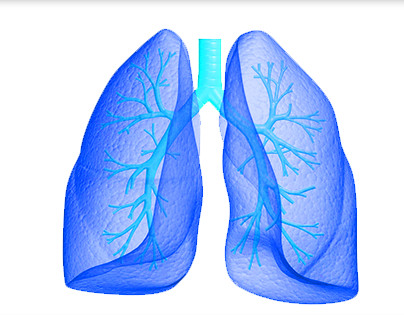|

Respiratory Alkalosis is an acid-base imbalance characterized by decreased partial pressure of arterial carbon dioxide and increased blood pH to less than 35 mm Hg, which is due to alveolar hyperventilation. Uncomplicated respiratory alkalosis leads to decrease in hydrogen ion concentration, which results in elevated blood pH.
Nursing and medical management of patients with Respiratory Alkalosis requires instituting safety precautions, monitoring ABG levels and more.
Causes
- Pulmonary Causes: severe hypoxemia, pneumonia, interstitial lung disease, pulmonary vascular disease and acute asthma.
- Nonpulmonary Causes: anxiety, fever, aspirin toxicity, metabolic acidosis, central nervous system disease, pregnancy.
Complications
Signs and Symptoms
- Cardinal Sign: Deep Rapid Breathing (40+ bpm)
- CNS and neuromuscular disturbances: lightheadedness, agitation, circumoral and peripheral paresthesias, carpopedal spasms, twitching and muscle weakness.
- Positive Chvostek’s sign
- Nausea and vomiting
- Muscle twitching
Assessment
CIRCULATION
- May report: History/presence of anemia
- Palpitations
- May exhibit: Hypotension
- Tachycardia, irregular pulse/dysrhythmias
EGO INTEGRITY
- May exhibit: Extreme anxiety (most common cause of hyperventilation)
FOOD/FLUID
Nausea/vomiting
- May exhibit: Abdominal distension (elevating diaphragm as with ascites, pregnancy)
- Vomiting
NEUROSENSORY
- May report: Headache, tinnitus
- Numbness/tingling of face, hands, and toes; circumoral and generalized paresthesia
- Lightheadedness, syncope, vertigo, blurred vision
- May exhibit: Confusion, restlessness, obtunded responses, coma
- Hyperactive reflexes, positive Chvostek’s sign, tetany, seizures
- Heightened sensitivity to environmental noise and activity
- Muscle weakness, unsteady gait
PAIN/DISCOMFORT
- May report: Muscle spasms/cramps, epigastric pain, precordial pain (tightness)
RESPIRATION
- May report: Dyspnea
- History of asthma, pulmonary fibrosis
- Recent move/visit to location at high altitude
- May exhibit: Tachypnea; rapid, shallow breathing; hyperventilation (often 40 or more respirations/minute)
- Intermittent periods of apnea
SAFETY
TEACHING/LEARNING
- May report: Use of salicylates/salicylate overdose, catecholamines, theophylline
- Discharge plan DRG projected mean length of inpatient stay: 5.4 days
- considerations: May require change in treatment/therapy of underlying disease process/condition
Diagnostic Studies
- CONFIRMING DIAGNOSIS: Arterial blood gas (ABG) analysis indicate PaCO2 less than 35 mmHg; pH elevated in proportion to the fall in PaCO2 (acute) or failing toward normal (chronic).
- Arterial blood gas (ABG) studies reveal abnormal values: pH above 7.45 and partial pressure of carbon dioxide below 35 mmHg.
- Arterial pH: Greater than 7.45 (may be near normal in chronic stage).
- Bicarbonate (HCO3): Normal or decreased; less than 25 mEq/L (compensatory mechanism).
- Paco2: Decreased, less than 35 mm Hg (primary).
- Serum potassium: Decreased.
- Serum chloride: Increased.
- Serum calcium: Decreased.
- Urine pH: Increased, greater than 7.0.
- Screening tests as indicated to determine underlying cause, e.g.:
- CBC: May reveal severe anemia (decreasing oxygen-carrying capacity).
- Blood cultures: May identify sepsis (usually Gram-negative).
- Blood alcohol: Marked elevation (acute alcoholic intoxication).
- Toxicology screen: May reveal early salicylate poisoning.
- Chest x-ray/lung scan: May reveal multiple pulmonary emboli.
Nursing Priorities
- Achieve homeostatis.
- Prevent/minimize complications.
- Provide information about condition/prognosis and treatment needs as appropriate.
Discharge Goals
- Physiological balance restored.
- Free of complications.
- Condition, prognosis, and treatment needs understood.
- Plan in place to meet needs after discharge.
Care Setting
This condition does not occur in isolation, but rather is a complication of a broader problem and usually requires inpatient care in a medical/surgical or subacute unit.
Related Concerns
- Plans of care specific to predisposing factors, e.g.:
- Anemias (iron deficiency, pernicious, aplastic, hemolytic)
- Cirrhosis of the liver
- Craniocerebral trauma
- Hyperthyroidism
- Fluid and electrolyte imbalances
- Heart failure: chronic
- Pneumonia: microbial
- Sepsis/septicemia
- Ventilatory assistance (mechanical)
Other Concerns
- Metabolic acidosis
- Metabolic alkalosis
Nursing Diagnosis
Nursing Care Plan
Main Article: Respiratory Alkalosis Nursing Care Plan
Nursing Interventions & Considerations
- Be alert for signs of changes in neurologic, neuromuscular or cardiovascular functions.
- Institute safety measures for the patient with vertigo or the unconscious patient.
- Encourage the anxious patient to verbalize fears
- Administer sedation as ordered to relax the patient
- Keep the patient warm and dry
- Encourage the patient to take deep, slow breaths or breathe into a brown paper bag (inspire CO2).
- Monitor vital signs
- Monitor ABGs, primarily PaCO2; a value less than 35 mmHg indicates too little CO2 (carbonic acid)
|